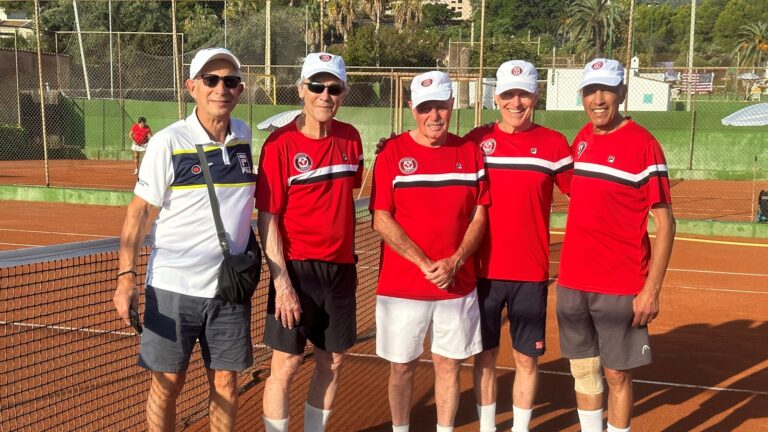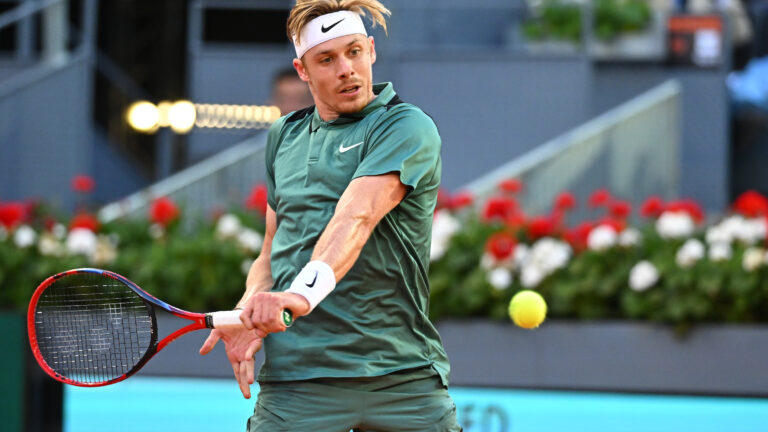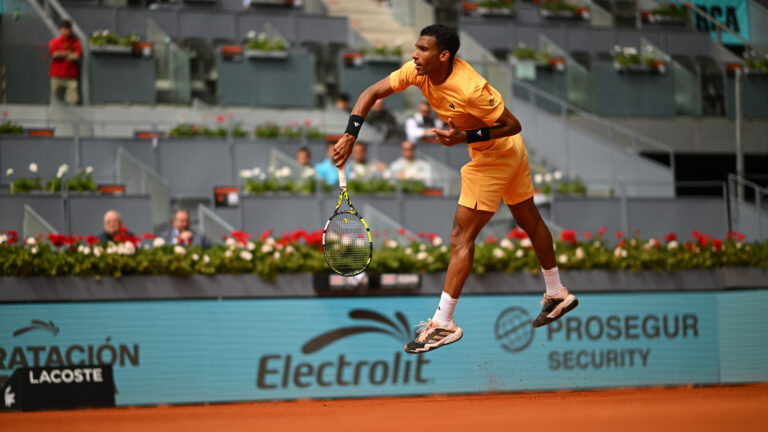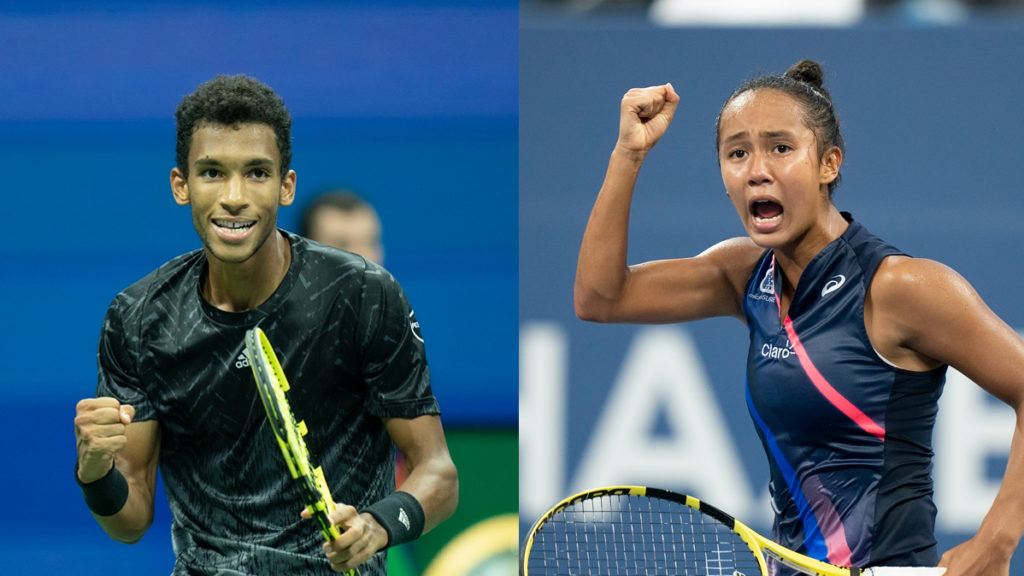
Leylah Fernandez and Félix Auger-Aliassime advanced to the quarter-finals of the US Open on Sunday with inspired performances on two of the grandest stages in tennis. Both came from a set down to win – Fernandez 4-6, 7-6(5), 6-2 over Angelique Kerber in Louis Armstrong Stadium and Auger-Aliassime 4-6, 6-2, 7-6(6), 6-4 against Frances Tiafoe in Arthur Ashe Stadium.
The Fernandez victory was more noteworthy mainly because she was only 18 (turned 19 on Monday) and upset a three-time Grand Slam champion with an outstanding display of power, precision and poise.
She controlled the early going and was a point from a 5-2 opening-set lead when she suddenly floundered – double faulting twice on game point and allowing Kerber back to 3-4. The 33-year-old German capitalized and went on to take the set 6-4 and extend to a 4-2 lead in the second set. Just when it seemed her experience and pedigree would rule the day, Fernandez revived – fiendishly pounding her ground strokes and bossing the rallies as she had in the early going. Her lock-down mentality and aggressive hitting got her back to 4-all in the set and she soon grabbed a 5-1 lead in the ensuing tiebreak before winning it 7-5, spurred on by enthusiastic crowd support.
She rode that wave through the third set, thrusting and twirling her arm in the air to orchestrate the roused-up fans in 14,069-seat Armstrong arena.
“The crowd has been amazing,” she would say later, “so thanks to them I was able to win.”
She continued to steamroll in the third set and by the end a shell-shocked Kerber had no answers for the Fernandez onslaught. She had been reduced to a supporting role on a stage featuring only one lead actor.
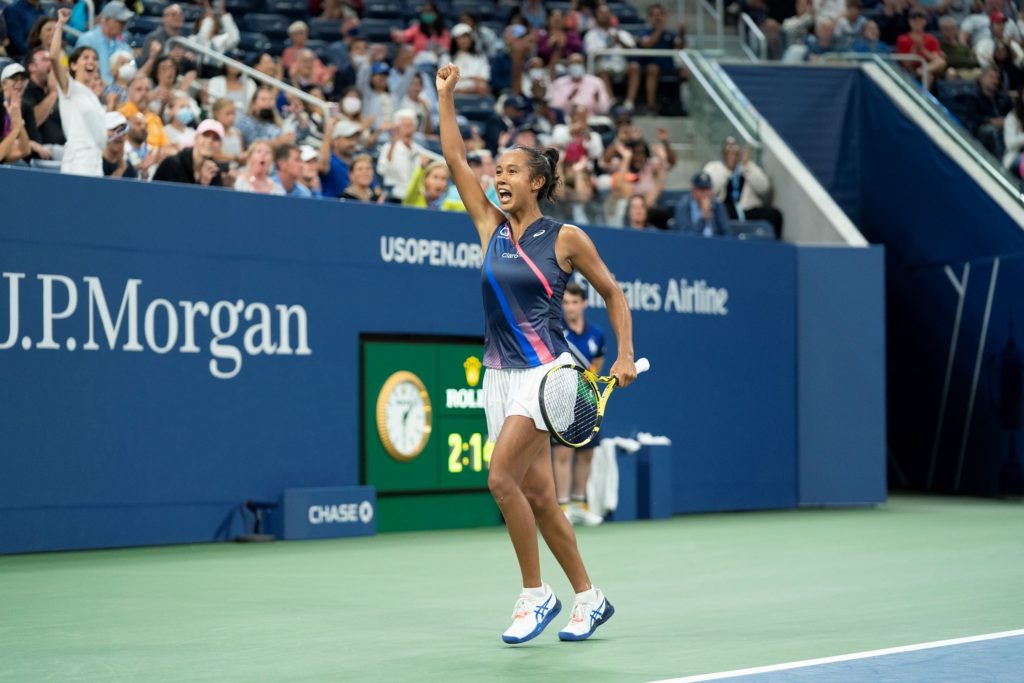
If there’s one lasting pattern from the match it’s of Fernandez getting into forehand-to-forehand, cross-court rallies with her fellow lefthander and, with her superior pace and mastery of angles, squeezing Kerber wider and wider with each stroke – a remarkable feat of skill and geometry.
Fernandez and Kerber had a pleasant exchange at the end of the match with Kerber congratulating her for her success in the tournament. There was a sense that the widely-respected German was being an exemplary loser in view of a misstep with another 18-year-old Canadian, Bianca Andreescu, after their 2019 final in Indian Wells. On that occasion she got herself embroiled in controversy by calling Andreescu “a drama queen.”
There were on-court similarities on Sunday to Andreescu’s 6-4, 3-6, 6-4 victory over Kerber at Indian Wells. But while Andreescu used more of a varied game to bamboozle Kerber, Fernandez’s approach was uncomplicated – brutally-struck forehands and backhands on almost every point. That showed in the winners count – 45 for her to 28 for Kerber.
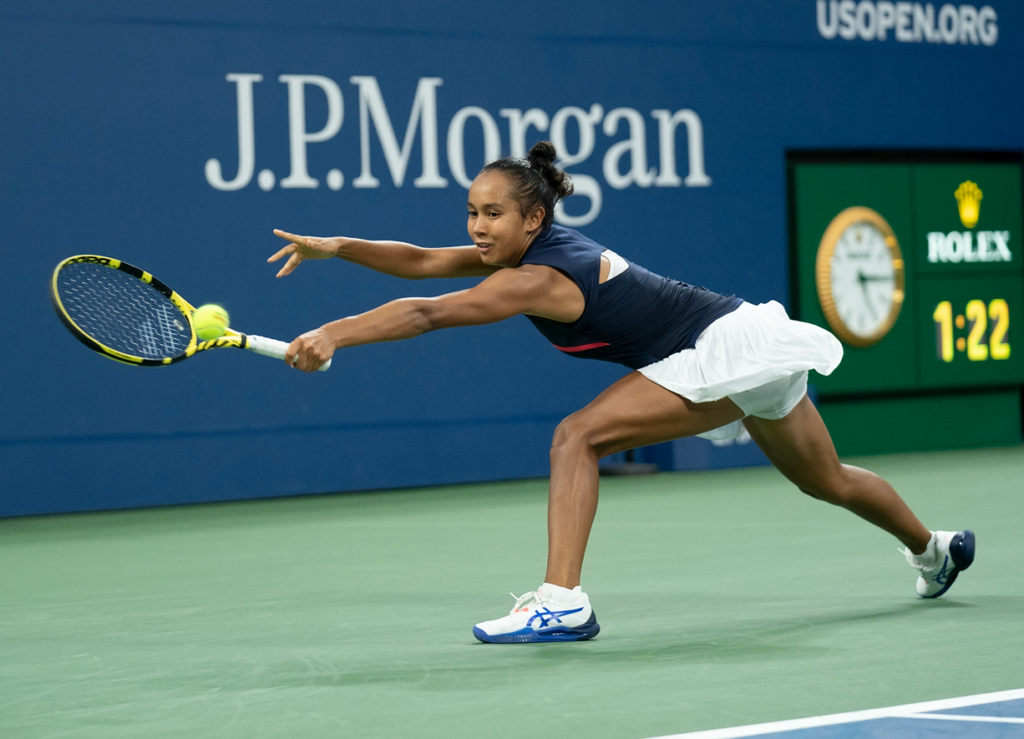
As she had been in the third set in her memorable upset of defending champion Naomi Osaka in the previous round, Fernandez didn’t waver or flinch as she got closer and closer to a victory that sets up a quarter-final against No. 5 seed Elina Svitolina on Tuesday.
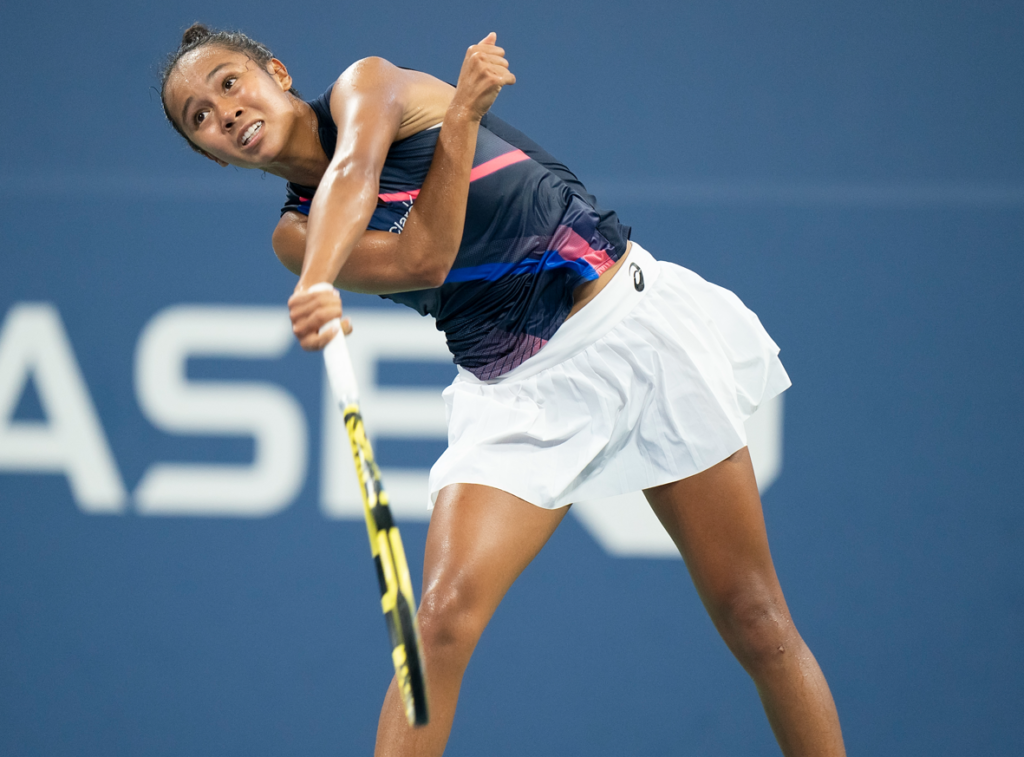
Her almost super-human focus and determination are what fuels her success on court. The person pulling most of the strings behind the scenes in her career since she took up the game at age seven has been her father Jorge, originally from Ecuador.
He has been the major influence and told TSN a revealing story about his approach with his daughter after her big upset over Osaka. Currently at home in Florida with his younger daughter Bianca, Jorge said that his advice to her after that career-altering victory was, “ignore everybody on your phone that wasn’t speaking to you last week.”
“That was rule No. 1,” he explained, “and she said ‘that was easy, there was like five people.’ I said ‘perfect.’ Secondly I said ‘look we still have so much more tournament to go so we have to focus on the next match. We have to consolidate that victory.’ For me it can’t be because we caught Naomi Osaka on a bad day. Let’s consolidate – let’s give people reason to believe in you. We have to ride that wave to make sure that people start believing. There’s only one way that that can happen – get back to work and win it. That’s it.”
Beating Svitolina, after her victories over former No. 1-ranked players Osaka and Kerber, is conceivable for Fernandez given her current form. They have played once – in Monterrey, Mexico, in 2020 with the Ukrainian winning 6-4, 7-5 – a year before Fernandez won the title there for her first WTA tournament victory this past March.
Svitolina, who turns 27 in less than a week, will be aware that Fernandez is part of a group of teenage prodigies that includes 17-year-old Coco Gauff of the U.S., 18-year-old Emma Raducanu of Great Britain, 18-year-old Clara Tauson of Denmark and 19-year-old Marta Kostyuk of Ukraine.
They have a brother in arms on the men’s side – 18-year-old Carlos Alcaraz of Spain who plays Auger-Aliassime in Tuesday’s quarter-finals.
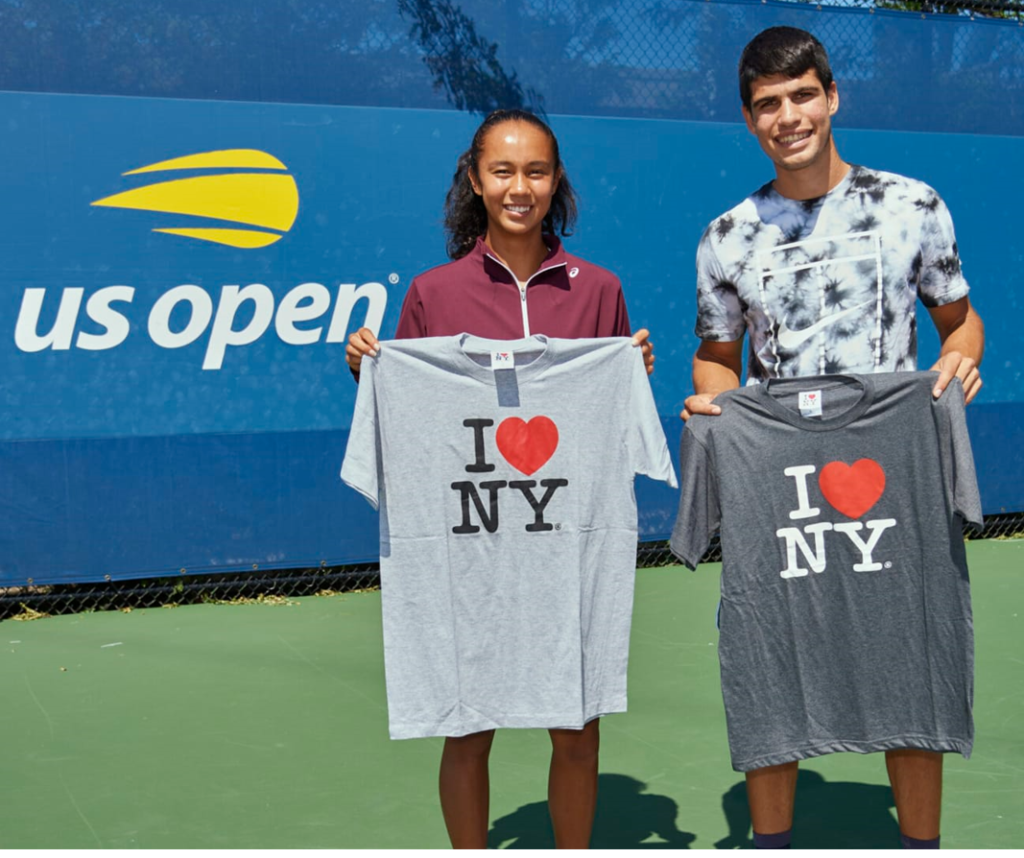
Fernandez and Alcaraz posed together during a photo-op on Saturday. “Seeing all these teenagers, the youngsters doing so great at the US Open, and the other tournaments too, is also eye-opening I think to the world, to the tennis world,” Fernandez said. “There is not only one group of tennis players but there is a new wave of young generations that’s coming up, and just trying to make an impact in the tennis game as much as they can.”
There has been no greater impact than hers at the 2021 US Open. Kerber, on court for two hours and 15 minutes on the receiving end of Fernandez’s burning desire and merciless attacking tennis, has seen that future. And it was not a pretty picture for her – at least not on Sunday in Louis Armstrong Stadium.
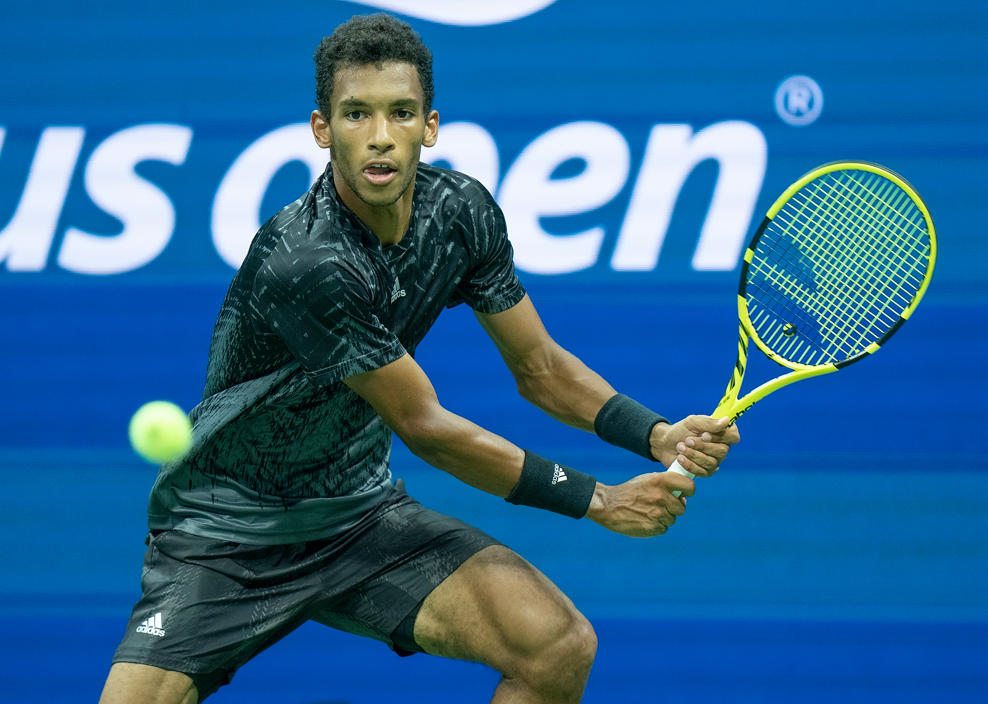
In his match with Tiafoe on Sunday night, Auger-Aliassime started tentatively, losing his serve in the opening game and dropping the set despite subsequently having eight break chances against the world No. 50.
The 23-year-old American is an explosive, energy-charged competitor who’s capable of hitting with exceptional power off the ground and with his serve. In the second set, Auger-Aliassime finally got to Tiafoe with breaks in the sixth and eighth games to take it 6-2.
The third set was vital to the outcome, and there was a growing sense that Tiafoe was having to red-line his game to keep pace with an Auger-Aliassime who had settled nicely into a consistent heavy-hitting and serving rhythm.
Auger-Aliassime had two set points at 5-4 and one at 6-5 but Tiafoe survived to force a tiebreak. He then had the first set point in the tiebreak at 6-5 but Auger-Aliassime saved it with a service winner. Two points later he sealed the set when Tiafoe erred with a service return into the net.
That seemed to deflate the American and Auger-Aliassime broke serve in the opening game of the fourth set, served out of a love-40 hole in the following game and then rode the service break the rest of the way to make his second Grand Slam quarter-final in a row after reaching the elite eight at Wimbledon in July.
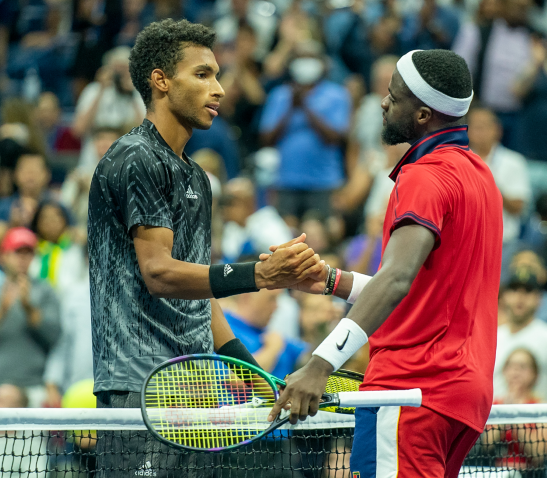
At the moment of victory, Auger-Aliassime showed compassion for his friend Tiafoe, who was playing in front of a home crowd that was partisan but fair, by just smiling and giving a muted fist pump to his courtside team.
“I’m happy with how I handled myself,” he said about the win, “with my attitude, and to be able to bounce back really well in the second set, to win a tough third set after having those (three) set points on my racquet.”
The Auger-Aliassime serve was key to the outcome – he hit 24 aces and won an impressive 83 per cent (65/78) of his first-serve points. “I always thought I had the qualities physically to have a good serve,” he said. “My height, my power – my rhythm I think has gotten much better. My toss is more consistent.”
After conceding that service break in the opening game of the match, Auger-Aliassime held in all 19 service games the rest of the way.
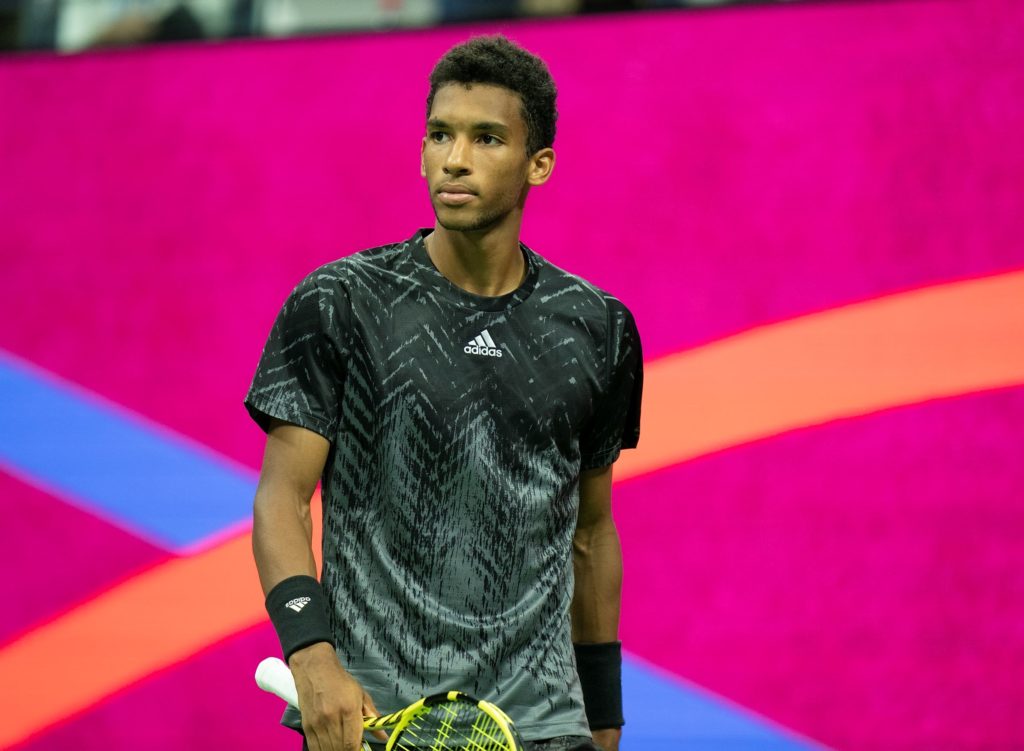
In Tuesday’s quarter-final he faces the tournament revelation, 18-year-old Alcaraz. “Carlos is a great player,” Auger-Aliassime said, “great person also, I think. He deserves to be in this position. He’s going to be top of the game I think for many years in the future.”
There was a moving conversation at the ESPN tournament desk after the match when former player James Blake, a black man, asked Auger-Aliassime about two black players like him and Tiafoe playing in Arthur Ashe Stadium, named after the first black man to win a Grand Slam title – the 1968 US Open.
“We’ve come a long way, Frances and I,” Auger-Aliassime said. “Our families have tough backgrounds both of us (Auger-Aliassime’s father is from Togo and Tiafoe’s family is from Sierra Leone). For us to be able to be here today to bring new faces to tennis, to inspire kids here in New York but also all over the world to people watching, I hope we see many new faces in the future in tennis.
“We’re playing on Arthur Ashe Stadium, he was the pioneer. But now to have kids like Frances and I stepping up and playing some good tennis, I really hope it inspires and sends a good message.”
FROM THE ARCHIVES
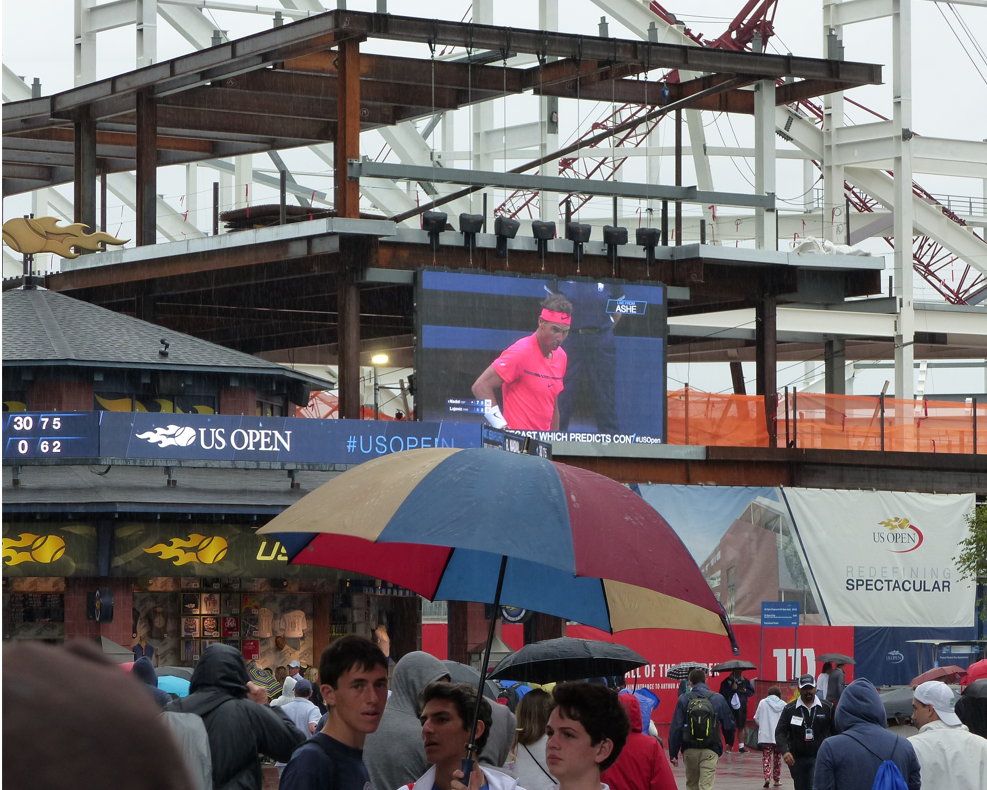
This picture is for anyone wondering what colour shirt Rafael Nadal wore at the 2017 US Open – a year he won the third of his four titles. In the background is the construction phase of Louis Armstrong Stadium, which opened in 2018.
Feature Photo: camerawork usa
